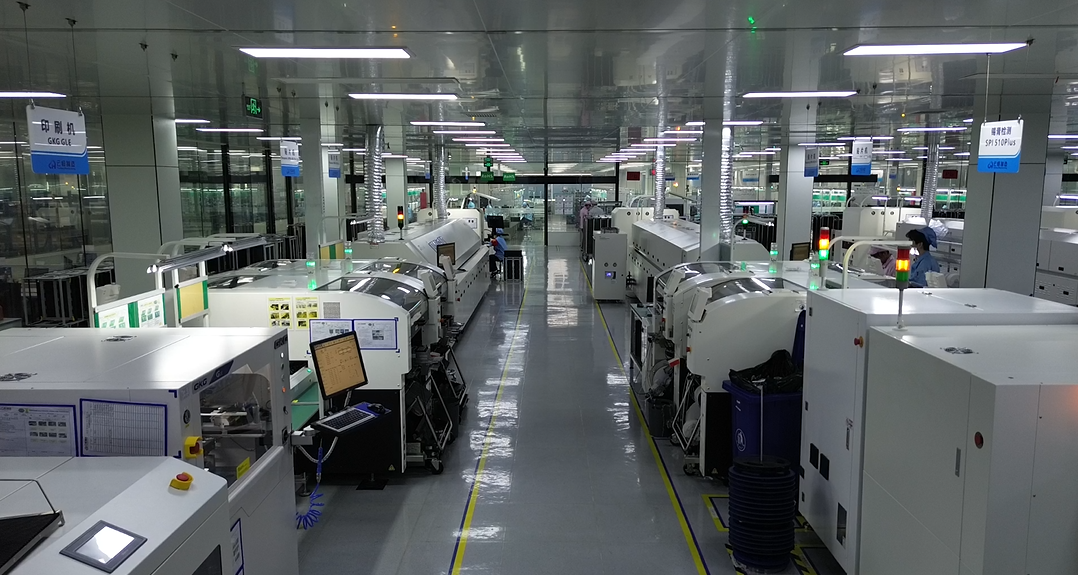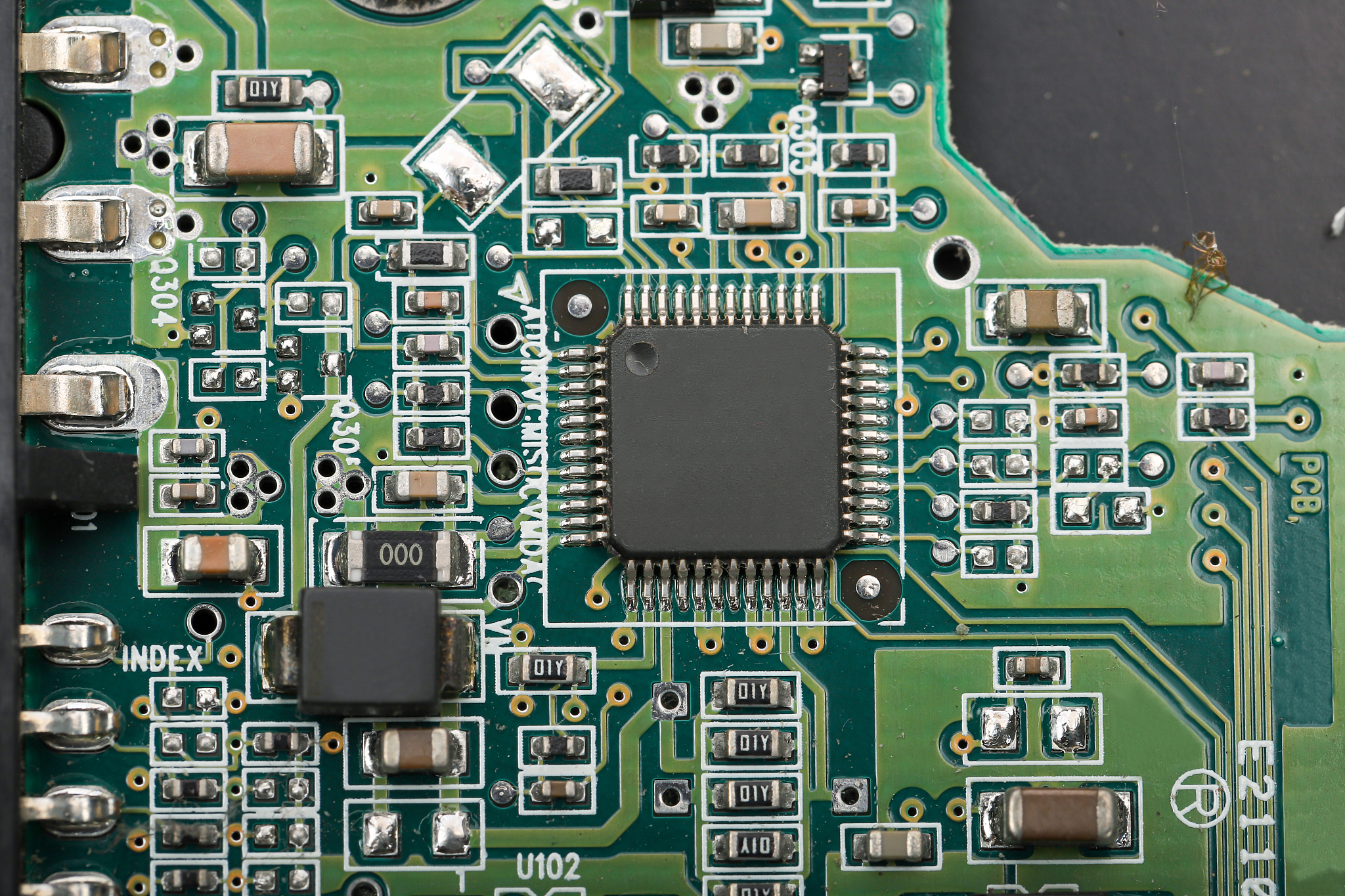PCBManufacturingProcess:AStep-by-StepBreakdown(pcb 上面的盲空指的是什么)
Design and File Preparation
The journey of PCB production begins with digital design. Engineers use specialized software to create circuit layouts, defining component placement and copper trace patterns. Design rules check (DRC) ensures proper spacing between elements and compatibility with manufacturing capabilities. Finalized designs are exported as Gerber files, which contain layer-specific information for drilling, copper layers, and solder mask application. This digital blueprint serves as the foundation for all subsequent manufacturing stages.
Material Selection and Cutting
Base materials significantly impact PCB performance. FR-4 epoxy-glass remains the standard substrate for most applications, while high-frequency circuits may require PTFE-based materials. Copper-clad laminates arrive in large panels, typically measuring 18"×24". Automated cutting machines trim these panels to required sizes, accounting for production panel utilization efficiency. Edge clearance allowances maintain structural integrity during processing, with panel thickness varying from 0.4mm for flexible circuits to 3.2mm for heavy-duty boards.
Imaging and Pattern Transfer
Photolithography techniques transform digital designs into physical circuits. Cleanroom environments prevent dust contamination as panels receive liquid photoresist coating. UV exposure through photomasks hardens resist in designated circuit areas. Unexposed resist dissolves during development, revealing copper for subsequent etching. Direct laser imaging systems eliminate phototool requirements for high-precision applications, projecting circuit patterns directly onto the photoresist layer with micron-level accuracy.
Etching and Copper Removal
Chemical etching removes unwanted copper from substrate surfaces. Ferric chloride or ammonium persulfate solutions dissolve exposed copper areas, leaving protected traces intact. Etchant concentration and temperature controls ensure consistent copper removal rates. Modern alkaline etchants improve vertical sidewall profiles for fine-pitch traces. Rinse cycles neutralize residual chemicals, followed by photoresist stripping to prepare boards for subsequent processing. This stage determines final circuit conductivity and signal integrity.
Layer Alignment and Lamination
Multilayer PCBs require precise layer stacking and bonding. Prepreg sheets—pre-impregnated with partially cured resin—sandwich copper foil layers. Optical alignment systems ensure layer-to-layer registration within 25μm tolerance. Hydraulic presses apply heat (180-220°C) and pressure (200-500 PSI) to fuse layers into a single structure. Controlled cooling rates prevent internal stress buildup. This process creates complex interconnect architectures while maintaining dimensional stability across temperature variations.

Drilling and Hole Formation
Mechanical drilling creates through-holes and vias using carbide-tipped bits. High-speed spindles (150,000-200,000 RPM) maintain hole wall smoothness, critical for reliable plating. Laser drilling produces microvias below 100μm diameter for HDI boards. Drill entry and exit boards minimize material burring and tool wear. Automated tool changers handle various drill sizes without interrupting production. Drilled holes undergo deburring to remove copper smears and prepare surfaces for metallization.
Electroplating and Metallization
Electroless copper deposition initiates conductivity in drilled holes. Catalytic chemical baths deposit 0.3-0.8μm copper layers across non-conductive surfaces. Electrolytic plating then builds up copper thickness to 25-35μm for current-carrying capacity. Pulse reverse plating enhances throwing power for uniform hole wall coverage. Secondary tin plating acts as etch resist for outer layer patterning. This metallization process establishes electrical continuity between PCB layers while reinforcing mechanical connections.
Solder Mask Application
Liquid photoimageable solder mask (LPI) protects copper traces from oxidation and prevents solder bridges. Screen printing or curtain coating applies uniform epoxy layers across panel surfaces. UV exposure through solder mask artwork patterns cures designated areas. Uncured material washes away during development, exposing component pads and connector points. Final curing at 150°C enhances chemical resistance and adhesion. Modern solder masks accommodate various colors while maintaining UL-recognized flame retardancy ratings.
Surface Finishing Options
Different applications demand specific surface treatments. Hot air solder leveling (HASL) remains cost-effective for general-purpose boards, creating flat solderable surfaces. ENIG (Electroless Nickel Immersion Gold) provides planar surfaces for fine-pitch components and excellent shelf life. Immersion silver offers superior conductivity for high-frequency applications, while OSP (Organic Solderability Preservative) serves as environmentally friendly temporary protection. Hard gold plating withstands repeated connector insertions in edge card applications.
Silkscreen and Marking
Component identifiers and logos are applied through screen printing or inkjet marking. Epoxy-based inks withstand soldering temperatures and chemical exposure. Automated optical recognition systems verify marking accuracy and legibility. Permanent markings include part numbers, polarity indicators, and safety certifications. UV-curable inks enable rapid processing, while laser etching creates permanent markings on solder mask layers without additional materials. Contrast requirements dictate color selection, typically white or yellow on green solder masks.
Electrical Testing and Quality Control
Flying probe testers check open/short circuits on prototype boards, while fixture-based testing verifies mass production units. Continuity tests confirm proper interconnection between design nodes. High-potential testing detects insulation defects in high-voltage applications. Automated optical inspection (AOI) systems compare board features against CAD data, flagging soldermask defects or copper abnormalities. Impedance testing ensures signal integrity for high-speed circuits, with tolerance thresholds typically set at ±10%.
Panel Separation and Profiling
V-scoring or routing separates individual PCBs from production panels. Carbide routing bits create smooth board edges, maintaining dimensional accuracy within ±0.15mm. Mouse bite tabs keep boards connected during assembly processes requiring panelized handling. Beveled edges on gold finger connectors facilitate smooth mating with backplane sockets. Final cleaning removes machining debris using DI water sprays and soft bristle brushes. Some applications require edge plating, achieved through specialized masking and plating techniques prior to separation.
Packaging and Storage
Vacuum-sealed anti-static bags prevent moisture absorption and oxidation during storage and shipping. Desiccant packs maintain low humidity levels, particularly critical for OSP-finished boards. ESD-safe trays protect gold contacts from mechanical damage. Barcode labels track lot numbers and manufacturing dates for quality traceability. Temperature-controlled warehouses (20-25°C, 30-70% RH) preserve solderability for extended periods. Just-in-time delivery models minimize inventory aging, especially for boards with organic surface finishes.
Environmental Considerations
Waste treatment systems neutralize acidic and alkaline effluents before discharge. Copper-bearing wastewater undergoes electrolytic recovery, reclaiming up to 98% of dissolved metals. Scrap laminate materials get repurposed as filler in construction materials. Energy-efficient convection ovens reduce power consumption in thermal processes. Closed-loop rinse water systems minimize freshwater usage. Compliance with RoHS and REACH regulations ensures restricted substance levels remain below 1000ppm for lead, mercury, and other hazardous materials.
Industry Standards and Certification
IPC-A-600 defines acceptability criteria for bare PCB workmanship. UL certification validates flammability ratings and long-term reliability. ISO 9001 certification ensures consistent quality management practices. Military-grade boards comply with MIL-PRF-31032 specifications for harsh environment operation. Automotive applications require IATF 16949 compliance, emphasizing process control and defect prevention. Regular audits verify ongoing adherence to these standards, with test coupons incorporated into production panels for destructive testing and process verification.

